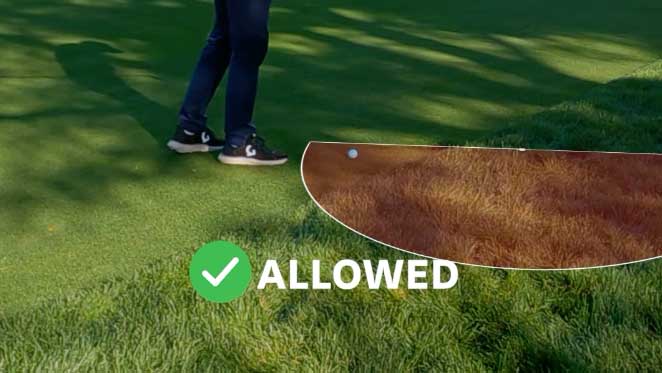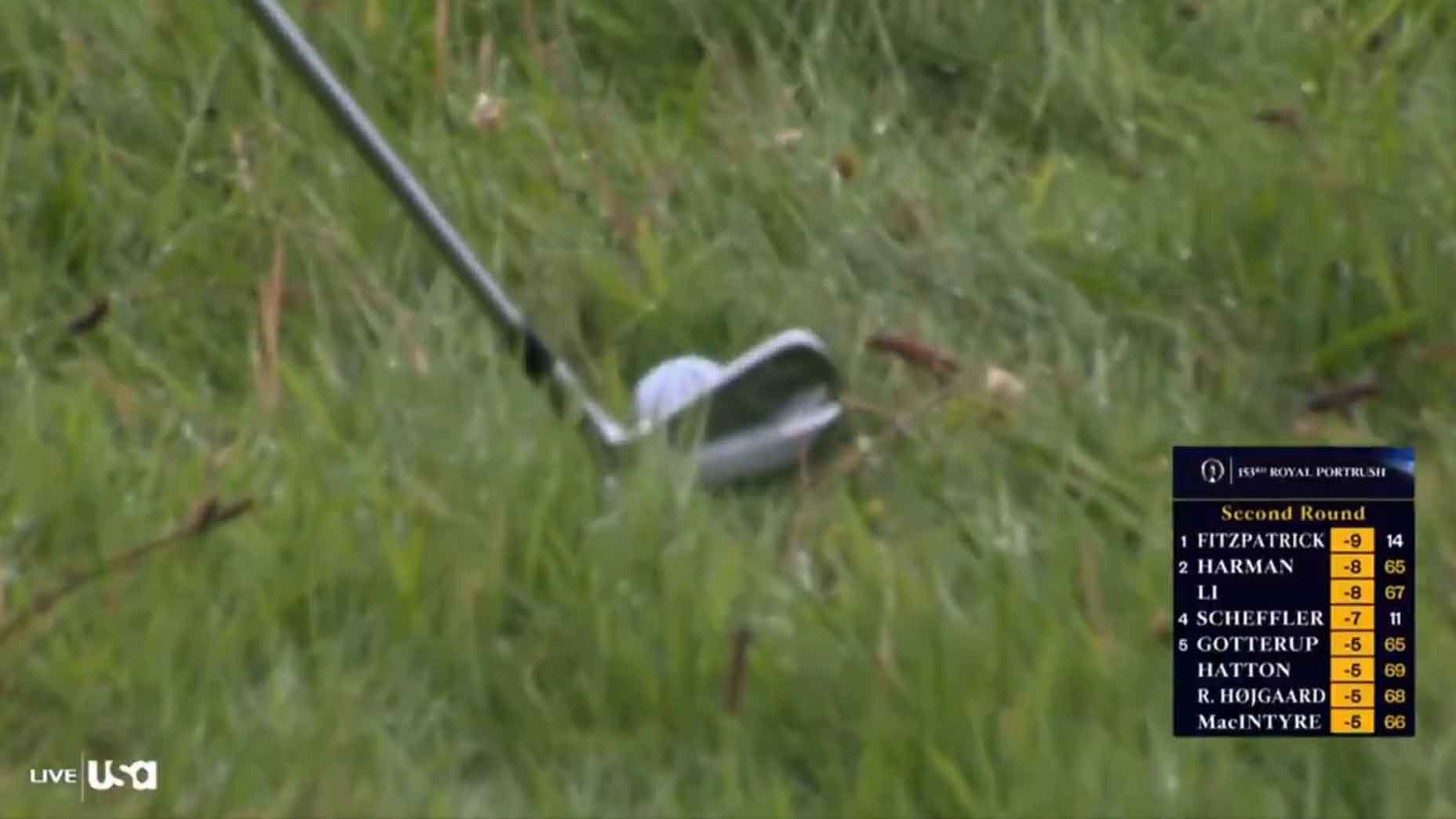Public conversations about the Rules of Golf tend to focus on big names and big stages
Rickie Fowler drops a ball and it rolls into the water at the Waste Management Open. Dustin Johnson grounds his club in the sand in Wisconsin, costing him the Wanamaker Trophy. Patrick Reed shows up at a Tiger-hosted tournament in the tropics and shows off his excavation skills.
But the pros are just a sliver of the golf population, which consists of tens of millions of well-intentioned people, playing the game in all kinds of contexts while trying to follow rules almost no one knows by heart.
Invariably, something unexpected happens. A drive nests in a tree, or settles in a pile of rodent pellets. A player takes up turf with a practice swing, and the sod blankets his ball like a toupee.
What are the options? The consequences?
Even common incidents can prompt questions, like a ball disappearing beyond red stakes on a hard-to-pin point line, or moving on the green as a player prepares to make a putting stroke.
Now what?
Answers are required, and promptly, please.
It is often in such moments that a call goes out, and Todd Stice picks up on the other end.
Stice, 50, is a former longtime club pro from Kansas City with a curious mind and the patient, friendly manner of a pre-school teacher. He is also a self-described “rules nerd” whose relationship with the game’s written guidelines is a like a seminarian’s with scripture. He studies them intently. That was true in his prior life as director of rules and competitions for the Kansas City Golf Association, and it remains the case in his current post at the USGA, where his official title is Manager, Rules (Technology, Content and Education).
How this little-known golf rule became a social-media hitBy: Josh Sens
Among his duties: helping man the USGA’s rules hotline, the golf-world equivalent of 9-1-1.
The service has been in place for more than 30 years, and like so much else in golf, the technology behind it has evolved, progressing from an era when phones had cords to our wireless Instagram age. Nowadays, most rules-related queries come to the governing body by way of email, social media or app. But at a time of rampant automatization, the hotline is still powered by the quaint proposition that it’s nice to speak with a human being.
And so it is that seven days a week (holidays excepted) from 9 a.m. to 5 p.m. EST, that golfers puzzled by some on-course occurrence don’t have to stand around shouting at one another, scratching their heads or scouring the Internet for answers. They can call or text 908-326-1850, and if Stice or one of his colleagues aren’t available on the spot, they’ll ring or text back, usually the same day or the next. In this way, Stice and a hotline staff of 10 field upward of 15,000 rules inquiries a year.
“I never get tired of the questions,” Stice says. “Every conversation is an opportunity to educate, or to learn something myself.”
As with golf, the unpredictability is part of the appeal. When the hotline rings, channeled through his computer in his home office in Kansas City, Stice can only guess at the source and the subject. It might be a tournament committee member at a private club, trying to sort out a discrepancy in scoring, or a couple of flustered buddies from a nearby muni about to come to blows over lateral relief.
Some questions come up more often than others. The most common pertain to penalty areas and what to do if your ball goes in one (frequently what you do, under Rule 17, is take a one-stroke penalty and play your next shot from a friendlier place). But, Stice says, golfers also ask a lot about a ball struck inadvertently on the green, which, under updated Rule 13.1d, no longer carries repercussions; you simply put the ball back where it was.
Rules-breaker in your group? Here’s how to confront the awkwardnessBy: Josh Sens
To work the hotline is to understand that you can be the bearer of both good and bad news.
Not long ago, Stice answered a call from a golfer whose practice-swing divot moved his ball. Bad news. That’s a one-stroke penalty. On the other hand, another recent call brought a question from a guy about his back brace. Could he wear it legally on the course? Good news. Yes, provided it served a medical purpose and not as a swing aid that, say, helped keep his club on the right path coming down. (In stroke play, that sort of non-conforming equipment violation would result in a DQ; in match play, it would mean a loss of hole on the first infraction, and a DQ if it happened again).
In the case of both the divot and the back brace, Stice knew the answer off the top of his head. He doesn’t get stumped often, but it happens, like the time a hotline caller inquired about the penalty for hitting the wrong ball not once but twice.
That was a new one. Stice wasn’t sure.
“I assumed you would treat it as two separate penalties, but I had to check,” Stice says.
He’d assumed wrong: penalty for the first wrong ball, but not for the second, the explanation being, in layperson’s parlance, that after a wrong ball is struck, nothing after counts until the golfer puts the right ball back in play.
“The way I think of it is that after that first wrong ball, it’s almost as if you enter a suspended state until you hit the right ball,” Stice says. “You can hit a second, third or fourth wrong ball and it’s not going to affect your score.”
Whether that would ever happen is another matter. But it’s also not the point. Golf is a game of boundless surprises. Something new is always waiting around the corner. The same applies, Stice says, when you study the rules.
“No matter how much you know, there’s always more to learn,” he says.
It’s not just that the rules run deep. It’s also that they make up a document that undergoes revisions every four years. Keeping up is tough, even for those who play golf for a living.
What hope is there for John and Jane Q. Public? Well, there’s a hotline manned by a team of experts eager to help.
“Sometimes we refer to it as the Bat phone,” Stice says.
Nothing in the rules says that heroes must wear capes.
Latest In Instruction

Josh Sens
Golf.com Editor
A golf, food and travel writer, Josh Sens has been a GOLF Magazine contributor since 2004 and now contributes across all of GOLF’s platforms. His work has been anthologized in The Best American Sportswriting. He is also the co-author, with Sammy Hagar, of Are We Having Any Fun Yet: the Cooking and Partying Handbook.











